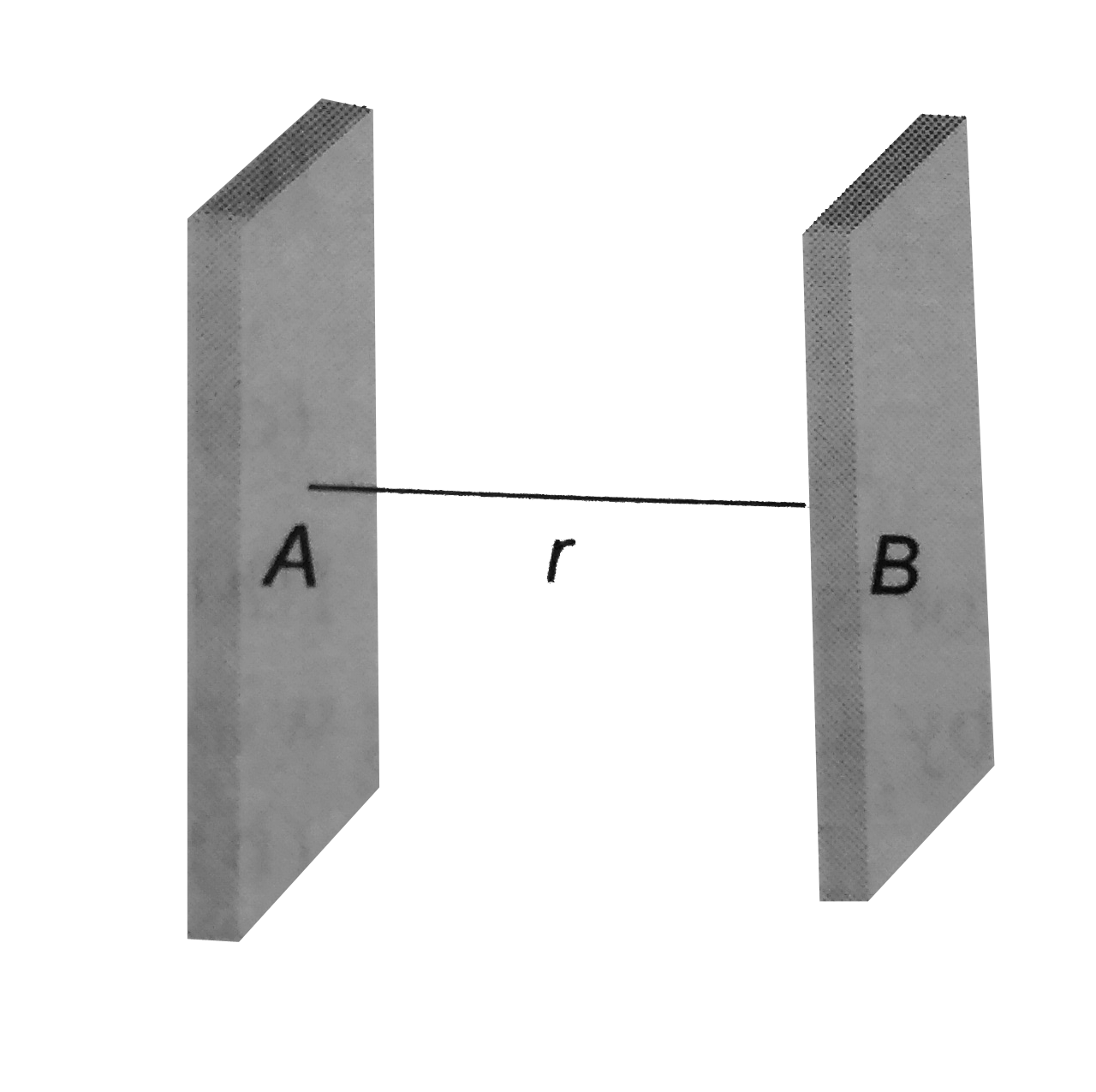Two parallel surfaces are at same potential . Distance between these surfaces is r. A charge is taken from one surface to other . What work is done in this case ?
The work done is zero because both the surfaces are at the same potential .
Similar Questions
Knowledge Check
There are two equipotential surafce as shown in figure. The distance between them is r. The charged of −q coulomb is taken from the surface A to B, the resultant work done will be
 AW=14πε0qrBW=14πε0qr2CW=−14πε0qr2DW= zero
AW=14πε0qrBW=14πε0qr2CW=−14πε0qr2DW= zeroThere are two equipotential surafce as shown in figure. The distance between them is r. The charged of −q coulomb is taken from the surface A to B, the resultant work done will be
 A14πε0qr2BZeroC−14πε0qrD−14πε0.qr2
A14πε0qr2BZeroC−14πε0qrD−14πε0.qr2Two identical spherical masses are kept at some distance. Potential energy when a mass m is taken from the surface of one sphere to the other
Aincreases continuouslyBdecreases continuouslyCfirst increases,then decreasesDfirst decreases,then increases
The plates of a parallel-plate capacior are given equal positive charges .What will be the potential difference between the plates ? What will be the charges on the facing surfaces and on the outer surfaces ?
View SolutionThe plates of a parallel-plate capacior are given equal positive charges .What will be the potential difference between the plates ? What will be the charges on the facing surfaces and on the outer surfaces ?
View SolutionOn the basis of your understanding of the following paragraph and the related studied concepts.
An equipotential surface is a surface with a constant value of electric potential at all points on the surface. The component of electric field parallel to an equipotential surface is zero, as the potential does not change in this direction. Thus, the electric field is perpendicular to the equipotential surface at each point of the surface. Further, say the direction of electric field electrical potential gradually fall with distance.
If a charge of 2 nC is taken from equipotential surface number 2 to 3, what is the amount of work done ?
View SolutionIf an object of mass m is taken from the surface of earth (radius R) to a height 5R, then the work done is
View SolutionTwo plane, smooth surfaces are parallel to each other and are initiallt a distance of 2 metre apart. The two surfaces approach each other with a velocity of 1cm/sec. A particle starts with a velocity of 4 cm/sec from one surface and collides normally and elastically on the other surface from the time the two surfaces start moving. The collisions continues back and forth till the surfaces touch each other. The total distance covered by the particle is :
View Solution
